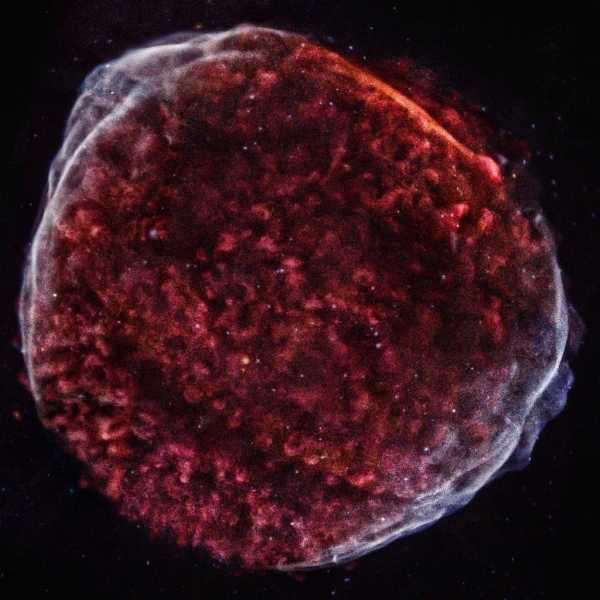
What is your knowledge on supernovae? You might say that a supernova is a magnificent explosion of a star, resulting in the formation of a neutron star or a black hole.
It’s not solely star explosions
However, not all supernovae are strictly the ultimate stage in the life of massive stars. According to the contemporary classification of supernova explosions, in addition to supergiant explosions, there are also other phenomena included.
Novelty and exploding stars


SN 1604, also known as Kepler’s Supernova, refers to a celestial event commonly referred to as a supernova. The term “supernova” originally derived from the term “new star,” as these celestial bodies were initially mistaken for new stars appearing in the sky. These “new” stars would gradually fade away over time. The earliest recorded instances of these “new” stars can be found in ancient Chinese chronicles dating back to the second millennium BC. Interestingly, many of these “new” stars were actually supernovae, including the one observed in 1571 by Tycho Brahe, who would later coin the term “new star.” However, it is now understood that these occurrences do not signify the literal birth of new stars.
Although these phenomena may seem similar, there is now a distinct contrast in their definitions. The peak luminosity of supernovae surpasses that of new stars by thousands and even hundreds of thousands of times. This variation can be attributed to the fundamentally disparate nature of these occurrences.
The emergence of fresh stars
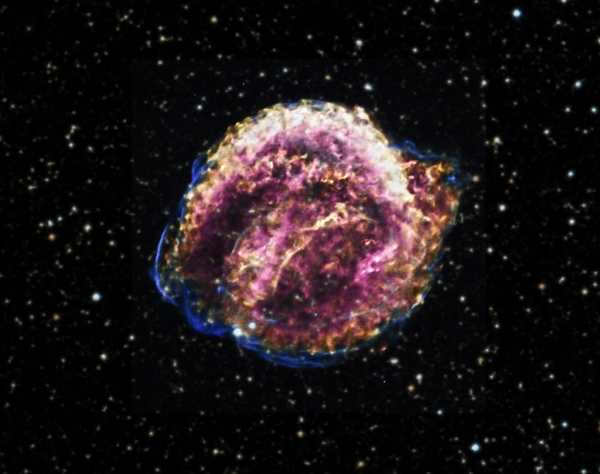

In the year 1604, a remarkable event took place when a supernova erupted.
Recently, there have been new occurrences of flares, which are classified as thermonuclear explosions that happen in certain stellar systems. These systems are comprised of a white dwarf and a larger companion star, such as a main-sequence star, subgiant, or giant. The immense gravitational pull of the white dwarf draws matter from the companion star, leading to the formation of an accretion disk around it. Occasionally, the thermonuclear processes within the accretion disk become unstable and result in explosive events.
Supernova explosions possess an entirely distinct and varied nature in terms of their genesis.
Supernovae Classification
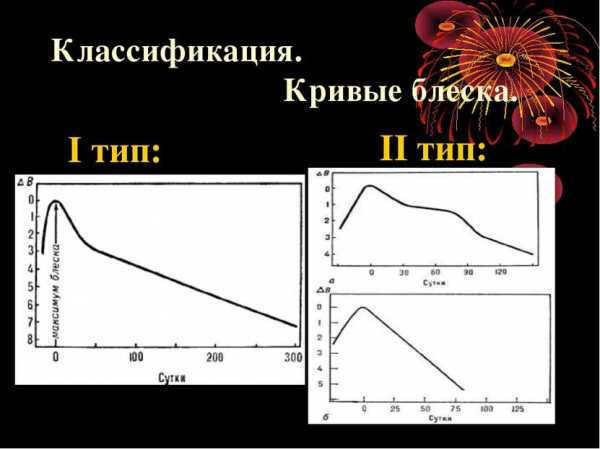
Supernovae are commonly divided into two primary categories (I and II). These categories can be referred to as spectral, as they are characterized by the presence or absence of hydrogen lines in their spectra. Additionally, these categories exhibit significant visual differences. All supernovae in Class I have similar explosion power and light change dynamics. In contrast, Class II supernovae are quite varied in these aspects. The magnitude of their explosion and the dynamics of their luminosity change span a wide range.
All Class II supernovae originate from the gravitational collapse that occurs within massive stars. Essentially, this is the well-known phenomenon of supergiant explosions. Within the realm of Class I supernovae, there exists a subset that undergoes a similar type of explosion mechanism as that of newborn stars.
The demise of supergiants
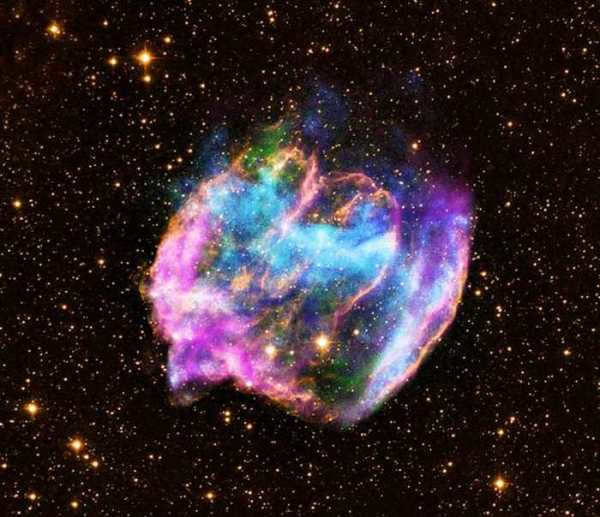

The remnants of the supernova W49B are the result of stars with masses that exceed 8-10 times that of the sun. These massive stars go through a series of thermonuclear reactions as they exhaust their hydrogen and switch to helium fusion. Once the helium is depleted, the star’s nucleus continues to synthesize heavier elements. This process creates multiple layers within the star, each undergoing its own type of thermonuclear fusion. Eventually, the star evolves into a “layered” supergiant, where iron fusion occurs in the core and helium fusion from hydrogen continues closer to the surface.
Social stratification
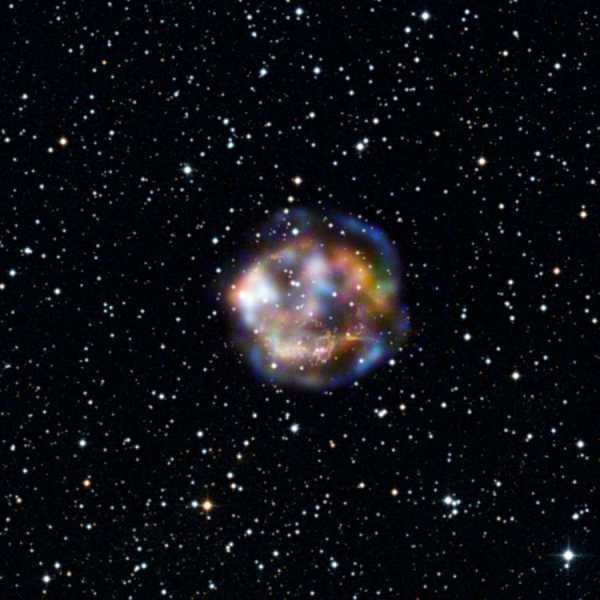
The Cassiopeia A supernova remnant is the result of a massive star exploding. The different classifications of supernovae are determined by the characteristics of the star before the explosion. For instance, Class I supernovae (subclasses Ib, Ic) lack hydrogen because the original star did not have any hydrogen to begin with. It is likely that some of its outer layer was lost during its evolution in a binary system. The Ic subclass is further distinguished from Ib by the absence of helium in its spectrum.
Supernovae of this kind, however, manifest in stars lacking an outer envelope of hydrogen and helium. The remaining layers, on the other hand, adhere to strict size and mass limitations. This constraint arises due to the successive occurrence of thermonuclear reactions at a critical stage. Consequently, explosions from stars of both class Ic and Ib exhibit striking similarities. At their peak, these explosions emit a luminosity approximately 1.5 billion times greater than that of the Sun. This luminosity is reached within a span of 2-3 days, after which it diminishes by a factor of 5-7 over the course of a month and gradually declines over subsequent months.
Type II supernova stars have a shell made up of hydrogen and helium. The boundaries of this envelope can vary depending on the star’s mass and other characteristics. As a result, there is a wide range of supernova types. The brightness of these stars can range from tens of millions to tens of billions of times that of our sun (excluding gamma-ray bursts – more on that later). Additionally, the way in which their brightness changes over time varies greatly.
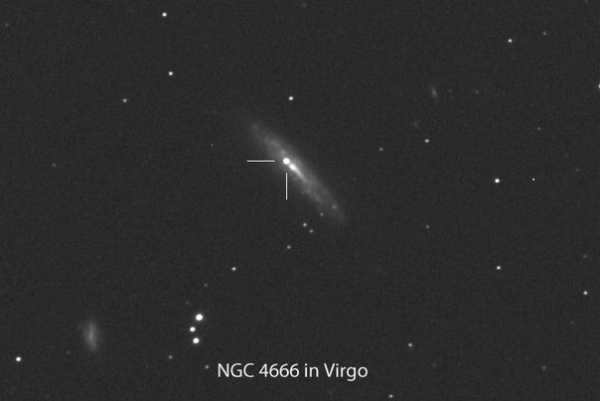
A unique type of supernovae is known as class Ia flares. These particular supernovae can only be observed in elliptical galaxies. This characteristic implies that these outbursts are not a result of the death of supergiant stars. Supergiants do not live long enough to witness their galaxies transition into an elliptical shape. Additionally, all flares in this category have nearly identical levels of brightness. This makes Type Ia supernovae the “standard candles” of the Universe.
They originate in a distinctively different manner. As mentioned earlier, these explosions share similarities with novae. One theory posits that they also originate in a binary system consisting of a white dwarf and its companion star. However, unlike novae, a different, more catastrophic type of detonation occurs in this scenario.
When the white dwarf consumes its companion, its mass increases until it reaches the Chandrasekar limit. This limit, which is approximately 1.38 times the mass of the Sun, is the maximum mass that a white dwarf can have before it transforms into a neutron star. This transformation is accompanied by a thermonuclear explosion that releases an enormous amount of energy, much greater than a typical nova explosion. The Chandrasekar limit is remarkably consistent, which explains the small variation in brightness among flares in this category. The brightness of these flares is nearly 6 billion times that of the Sun, and their behavior is similar to supernovae in the Ib and Ic classes.
Explosions of Hypernovae
Hypernovae are explosive events that release energy several orders of magnitude greater than typical supernovae. In other words, hypernovae are exceptionally bright supernovae.
Typically, hypernovae are believed to occur in supermassive stars, also known as hypergiants. These stars have a mass starting at 80 times that of the Sun and often exceed the theoretical limit of 150 solar masses. There are also theories suggesting that hypernovae can be formed through antimatter annihilation, the formation of quark stars, or the collision of two massive stars.
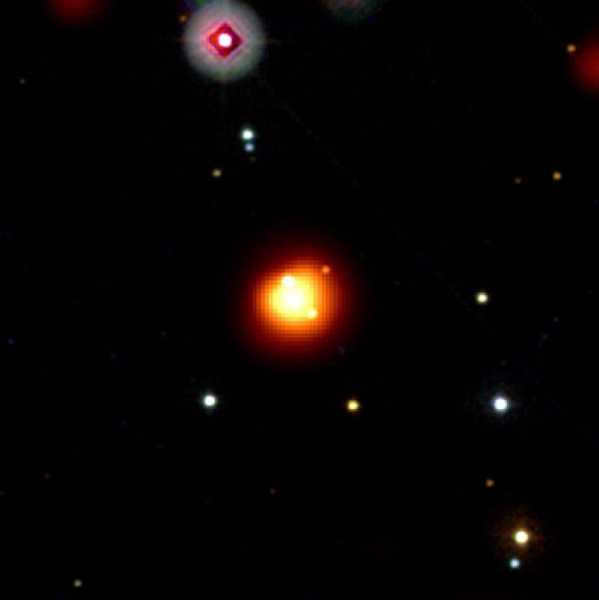
Supernova GRB 080913 is known for its uniqueness in being the primary cause of the most energy-intensive and rarest events in the Universe, known as gamma-ray bursts. These bursts can last from a fraction of a second to several hours, with the most common duration being one or two seconds. Remarkably, during these short bursts, they emit an amount of energy equivalent to that of the Sun over its entire 10 billion year lifespan! Despite their significance, the true nature of gamma-ray bursts remains largely uncertain.
Despite their devastating nature, supernovae can rightfully be referred to as the creators of life in the Universe. The tremendous force of their explosion propels the interstellar medium to give rise to gas-dust clouds and nebulae, which eventually give birth to stars. Another notable characteristic is that supernovae enrich the interstellar medium with heavy elements.
It is supernovae that generate all chemical elements beyond iron. As mentioned earlier, the synthesis of such elements requires an expenditure of energy. Only supernovae have the ability to “energize” the compound nuclei and neutrons for the energy-intensive production of new elements. The kinetic energy from the explosion disperses them throughout space along with the elements formed within the core of the exploded star. These elements include carbon, nitrogen, oxygen, and other vital components necessary for organic life to exist.
Supernova observation
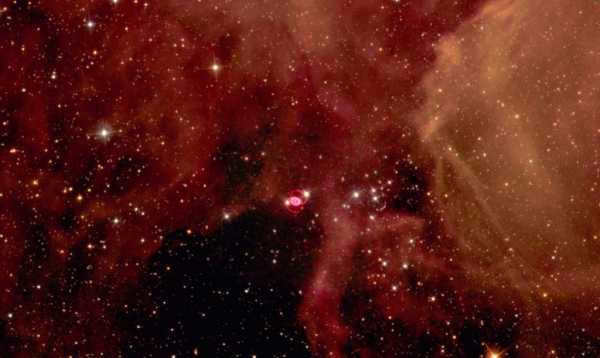
Supernova explosions are extremely uncommon events. In our galaxy, which is home to over a hundred billion stars, there are just a few eruptions every century. Historical records and medieval astronomical sources have documented only six supernovae visible to the naked eye in the past two millennia. Present-day astronomers have never witnessed supernovae in our galaxy. The closest one occurred in 1987 in the Large Magellanic Cloud, a satellite of the Milky Way. Scientists annually observe approximately 60 supernovae happening in other galaxies.
Supernovae are typically observed at the time of the outburst due to their rarity. The events leading up to the outburst are rarely witnessed, which contributes to the mysterious nature of these phenomena. The scientific community has not yet been able to accurately predict when and where a supernova will occur. It takes millions of years for a candidate star to reach the point of eruption. One star of particular interest in this context is Betelgeuse, which has the potential to illuminate the Earth’s sky for generations to come.
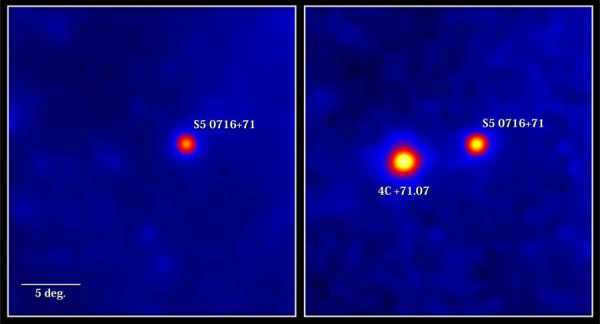
A gamma-ray flare has occurred in the galaxy 4C 71.07.
Hypernova explosions are even more uncommon. In our galaxy, such an occurrence happens only once in hundreds of thousands of years. Nevertheless, gamma-ray bursts produced by hypernovae are detected nearly every day. They are so incredibly intense that they can be detected from virtually any location in the Universe.
For instance, a gamma-ray burst, situated 7.5 billion light-years away, was visible to the naked eye. Taking place in the Andromeda galaxy, the sky of Earth was illuminated for a brief moment by a star with the luminosity of a full moon. If this had occurred on the opposite side of our galaxy, a second sun would have emerged in the Milky Way! It turns out that the intensity of the flash is trillions of times greater than that of the Sun and millions of times brighter than our galaxy. Considering the fact that there are billions of galaxies in the Universe, it’s no surprise why such occurrences are observed on a daily basis.
Impact on our planet
It is highly unlikely that supernovae could pose any threat to contemporary humanity or have any impact on our planet. Even if Betelgeuse were to explode, it would only illuminate our skies for a few months. Nevertheless, they have undeniably had a significant impact on us in the past. One example is the initial of five mass extinctions on Earth, which occurred 440 million years ago. According to one hypothesis, this extinction event was triggered by a gamma-ray burst in our Galaxy.
What is even more remarkable is the vastly different role that supernovae play. As previously mentioned, it is supernovae that generate the essential chemical elements for the emergence of carbon-based life. Earth’s biosphere was no exception. The solar system was formed within a gas cloud that contained remnants of previous explosions. Therefore, it can be said that our existence is owed to supernovae.
Materials related to the subject
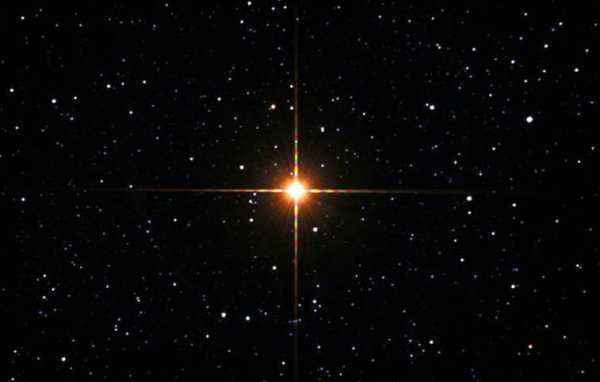
Betelgeuse explosion
In addition, the explosion of Betelgeuse and other supernovae have had a significant impact on the development of life on our planet. These cosmic events have increased the background radiation on Earth, leading to genetic mutations in organisms. It is important to acknowledge the role of supernovae in major extinctions throughout history. Without these catastrophic events, the Earth’s biosphere would be inhabited by entirely different species today.
The magnitude of stellar explosions
In order to gain a clear comprehension of the sheer power behind supernova explosions, it is necessary to examine the equation that relates mass and energy equivalence. This equation reveals that within each gram of matter lies an astronomical amount of energy. Therefore, the energy released by a single gram of matter is comparable to the force generated by an atomic bomb detonated over Hiroshima. Furthermore, the energy emitted by a super bomb is equivalent to that of three kilograms of matter.
Every single second, the Sun’s interior undergoes thermonuclear processes that convert 764 million tons of hydrogen into 760 million tons of helium. This means that the Sun emits energy equal to 4 million tons of matter every second. However, only a tiny fraction of the Sun’s total energy, equivalent to two kilograms of mass, actually reaches the Earth. It is estimated that the explosion of the Tsar Bomba would have been visible from Mars due to this immense amount of energy. Interestingly, the Sun provides several hundred times more energy to Earth than all of humanity consumes. In fact, to meet the annual energy needs of the entire modern human population, only a few tons of matter would need to be transformed into energy.
Supernovae: A Multitude of Spectacular Events
While commonly linked to the destruction of stars, the term “supernova” encompasses a wide range of extraordinary phenomena. Each supernova is as unique as the star it originated from, and there is still much to uncover about their mysterious nature.
A significant number of gigantic stars conclude their life cycle with a devastating burst.
These stars explode similar to supernovae, illuminating the surrounding space for hundreds or even thousands of parsecs. Consequently, they become visible as an additional celestial body in the skies of other star systems, ranging from several days to several years.
MYTH
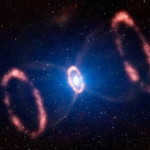
According to an ancient legend of the Atayal tribe from Taiwan, when the tribe first arrived on the island, they were greeted with an unusual phenomenon in the sky. Instead of one sun, there were two – a large, yellow one and a small, blue one. Interestingly, these suns would take turns illuminating the Earth, with the normal sun shining during the day and the blue sun casting its glow at night.
During these nights, the birds would continue to sing and the animals would keep running, creating a noisy atmosphere as if it were daytime. However, when the two suns converged, the temperature would rise to unbearable levels. The heat would be so intense that crops would wither, leaves would fall from the trees, and people would be unable to leave their homes due to the scorching air. Sleep and food became scarce, leading to growing frustration and anger towards the two suns.
Finally, the young boy spoke up, exclaiming, “I have been diligently training with my bow and arrow every single day. I am confident that I have the ability to shoot down the sun.” The seasoned hunters, who were much older, couldn’t help but chuckle at the boy’s audacious claim. One of them scoffed, saying, “You can’t even hit a monkey in a tree. How do you expect to hit the sun, which is much farther away than a monkey?” The boy, feeling a surge of indignation, continued to insist, “I will hit it, I promise!” Unfortunately, no one took him seriously. As the crowd dispersed, the majority of the hunters were still laughing at the boy’s ambition to bring down the sun. The only person who had faith in him was his father.
The following day, the father and son prepared their provisions for the extensive voyage to the tallest peak on the distant side of the island. The father expressed, “By scaling the lofty mountain, we increase our likelihood of striking the sun and bringing it crashing down.” Encircling his son with his arm, he declared, “I have faith in your ability to achieve this.” And so, they embarked on their expedition. Along the way, they encountered numerous scorching days, restless nights, encountered dangers posed by deceitful thieves and untamed creatures, and navigated around swiftly flowing rivers.
At last, they reached the summit of the tallest mountain. It was supposed to be nighttime, but the vibrant blue sun radiated its light all around them. The young boy had no desire to rest; he retrieved his bow and arrow and took careful aim at the petite blue sun. With all his might, he drew back the bowstring and released the arrow. The arrow struck the circular body of the blue sun with precision. The sun diminished in size, and scorching blood gushed from the wound. The boy and his father were forced to flee as enormous droplets of blood cascaded from the sky. These droplets ignited the foliage and even heated the rocks. Then, just like the fading light in a dying creature, the blue sun extinguished, and darkness enveloped the surroundings.
On this particular occasion, the young lad and his paternal figure were granted a crystal-clear view of the celestial body known as the moon, along with its accompanying stars, as well as the vast expanse of the nocturnal heavens. Their joy was so overwhelming that they couldn’t help but burst into fits of laughter and embrace one another tightly, before proceeding to gracefully twirl and sway to an imaginary tune in the ethereal moonlight. Eventually, their exhausted bodies succumbed to a deep slumber, a luxury they hadn’t experienced in what felt like an eternity.
THE MOMENT A STELLAR ENTITY EXPIRES
According to contemporary theories, the process of thermonuclear fusion occurring within stars for an extended period of time leads to the enrichment of their inner regions with heavier elements. As thermonuclear fusion takes place and heavy elements form, the star undergoes a contraction and experiences an increase in temperature at its core. If the star’s mass is substantial enough, the process of thermonuclear fusion will ultimately culminate with the creation of iron and nickel nuclei, causing further compression. Simultaneously, thermonuclear reactions will only persist within a specific layer of the star surrounding the central core, where there remains unburned thermonuclear fuel.
Afterwards, a discharge of the shell material occurs from the nucleus, resulting in a shockwave that spreads outward with such intensity that it forcibly ejects the star’s outer shell into the cosmos. This event is accompanied by a tremendous burst of light that illuminates the surrounding space. In binary star systems, where the dynamics are more intricate, the birth of new stars is marked by explosive phenomena, but these are the very stars that have the potential to shine brilliantly as massive blue stars for an extended period of time.
IN THE RECORDS AND BENEATH THE OBSERVATION DEVICES.
There have been approximately 200 accounts of new and supernovae starbursts from ancient times to the year 1700, and the quest for them in the records, manuscripts, and chronicles of both the East and the West continues. Recently, J. J. H. W. H. Bennett, an American scientist affiliated with the Institute of Cosmonautical Sciences in the United States, revealed that Mihanovsky had successfully deciphered a clay tablet of the Sumerians. This tablet contained the oldest oral legend about the appearance and disappearance of a “second sun deity” in the southern part of the sky. One chronicle from China mentions a comet observed in 2296 B.C., while another chronicle describes the eruption of a supernova on December 7, 185 that remained visible until the following July. According to the chronicle, it displayed “five colors in succession” and was the size of bamboo counters. The remnants of a supernova explosion in 1054 can now be seen in the Crab Nebula. The Chinese chronicles provide a detailed account of this event, and the Native Americans created a pictogram in Chaco Canyon to commemorate it.
There is ample evidence supporting the notion that a supernova star detonated in our segment of the Milky Way in the reasonably recent past. And it is plausible that the myths and legends of ancient civilizations still retain the memory of that event.
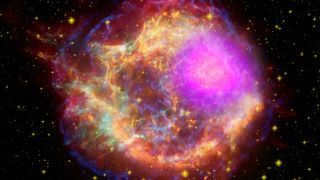
A supernova occurs when a star reaches the end of its life and detonates in a magnificent outburst of illumination.
Supernovas can momentarily outshine entire galaxies and emit more energy than our sun will in its entire existence. They are also the primary origin of heavy elements in the cosmos. According to NASA, supernovas are “the most extensive explosion that transpires in space.”
A new supernova, named SN 2023ixf, has been attracting attention since it first appeared on May 19, 2023. The discovery was made by Koichi Itagaki, a supernova hunter from Yamagata, Japan, who noticed a bright spot in the Pinwheel Galaxy. The following day, the Zwicky Transient Facility (ZTF) in California confirmed the presence of the supernova.
Supernovas have been observed by various civilizations long before the invention of the telescope in the 17th century. The oldest recorded supernova, RCW 86, was spotted by Chinese astronomers in A.D. 185. Their historical records indicate that this celestial phenomenon, known as a “guest star,” remained visible in the sky for a period of eight months, as reported by NASA.
The Crab Nebula, which is widely regarded as the most well-known supernova, was initially detected by ancient Chinese and Korean astronomers who documented this stellar explosion in their records in 1054. Additionally, there is evidence to suggest that Native Americans may have also witnessed this event, as depicted in rock paintings discovered in Arizona and New Mexico. The brightness of the supernova that gave rise to the Crab Nebula was so intense that it could be observed during daylight hours by these early astronomers.
Several other supernovas were observed prior to the invention of the telescope, including those that occurred in the years 393, 1006, 1181, 1572 (which was extensively studied by renowned astronomer Tycho Brahe), and 1604. Brahe chronicled his observations of the “new star” in his book entitled “De nova stella,” which ultimately popularized the term “nova.”
Answers to Frequently Asked Questions About Supernovas by an Expert
We reached out to Huei Sears, a physics graduate student at Northwestern University, to address some common inquiries about supernovas.
Huei Sears is currently a sixth-year PhD candidate in Physics at Northwestern University. Her research focuses on studying the host galaxies of long gamma-ray bursts (GRBs) that occurred approximately 12.5 billion years ago. These long GRBs are believed to originate from the demise of the most massive stars, and her objective is to analyze their host galaxies in order to gain insights into the characteristics of these massive stars.
What is the definition of a supernova?
A supernova refers to the powerful explosion of a massive star. There exist various categories of supernovae, but they can generally be divided into two primary types: thermonuclear runaway and core-collapse. The former type occurs in binary star systems where at least one star is a white dwarf, and these are commonly referred to as Type Ia SNe. The latter type occurs when stars with masses greater than 8 times that of our sun collapse inward and undergo a violent explosion. Each of these SNe types has multiple subtypes, which are classified based on the elements observed in their spectra.
What occurs after a supernova?
Following a supernova, several different outcomes can occur. Occasionally, the star that exploded will undergo a partial collapse into either a black hole or a neutron star. The remaining mass will then either be converted into energy or be expelled due to the force of the explosion. This expelled material is sometimes referred to as a “supernova remnant,” which is a specific type of nebula.
If the star that exploded was exceptionally massive, a long gamma-ray burst can also take place during the supernova event! Some of the discarded material will become entangled around the resulting black hole or neutron star and subsequently be ejected through a jet at speeds approaching that of light. Due to the rapid movement of the material, it can emit photons at extremely high gamma-ray energies — this is known as the gamma-ray burst!
What triggers the start of a supernova?
A Type Ia supernova initiates when the white dwarf in the binary system accumulates an excessive amount of mass, exceeding approximately 1.44 times the mass of our sun. The precise mechanism behind the explosion remains a subject of ongoing investigation, although it is widely believed that the additional mass causes the core of the white dwarf to heat up. This increase in temperature leads to a buildup of pressure and energy within the star, ultimately resulting in a catastrophic and explosive event.
In the case of a core-collapse supernova event, the initial stage is characterized by the fusion of silicon into iron within the star’s core. Typically, the fusion of elements into heavier substances results in the release of energy, which prevents the star from collapsing. However, iron is unique in that it requires energy input to undergo fusion with other elements. Once iron synthesis commences, it absorbs energy, causing the star to collapse upon itself. The collapse occurs rapidly, within approximately 1 second, and when the core reaches a critical density, gravity is overcome by the repulsive nuclear force, leading to a violent expulsion of matter outward.
When stars reach the end of their life cycle
According to research conducted by the European Space Agency, it is estimated that, on average, a supernova event occurs once every 50 years within a galaxy the size of the Milky Way. This means that approximately every 10 seconds, a star somewhere in the universe explodes, as stated by the U.S. Department of Energy.
Approximately 10 million years ago, a series of supernovas gave rise to the formation of what is now known as the “Local Bubble.” This bubble is a peanut-shaped region of gas within the interstellar medium, spanning a distance of 300 light-years and encompassing our own solar system.
Categories of supernovae
There are two distinct categories in which a star can undergo a supernova event:
Type I supernova: A star acquires matter from a neighboring star, leading to an uncontrolled nuclear reaction.
Type II supernova: A star exhausts its nuclear fuel and collapses due to the immense gravitational forces acting upon it.
Type II supernovas
Let’s examine the more exhilarating Type II first. In order for a star to detonate as a Type II supernova, it must possess several times more mass than the sun (estimations range from eight to 15 solar masses). Similar to the sun, it will eventually deplete its hydrogen and helium fuel at its core. However, it will retain sufficient mass and pressure to undergo carbon fusion.
Subsequently, progressively heavier elements accumulate at the core, and the star develops concentric layers of matter, with elements becoming lighter towards the outer regions of the star. Once the core of the star exceeds a certain mass (referred to as the Chandrasekhar limit), it initiates a collapse. Therefore, these Type II supernovas are also referred to as core-collapse supernovas.
Eventually, the collapse rebounds from the core, ejecting the stellar material into space and giving rise to the supernova phenomenon. This cosmic event leaves behind an incredibly dense object known as a neutron star, which occupies a space no larger than a city but possesses the same mass as the sun.
Type II supernovae can be further categorized based on their light curves, which illustrate changes in light intensity over time. Type II-L supernovae display a gradual decrease in brightness following the explosion, while Type II-P supernovae maintain a steady luminosity for a longer period before fading. Both types exhibit the presence of hydrogen in their spectral signatures.
Astronomers speculate that stars significantly more massive than the sun (around 20 to 30 solar masses) do not undergo supernova explosions. Instead, these massive stars collapse to form black holes.
Type I supernovas
Type I supernovas do not show a hydrogen signature in their light spectra and are generally believed to originate from white dwarf stars in a close binary star system. As the gas from the companion star accumulates onto the white dwarf, the white dwarf becomes increasingly compressed, eventually triggering a runaway nuclear reaction inside it that ultimately leads to a catastrophic supernova explosion.
Astronomers utilize Type Ia supernovas as “standard candles” for measuring cosmic distances because it is believed that all of them radiate with equal brightness at their maximum points.
Observing a supernova
New research indicates that supernovas produce vibrations similar to those of large speakers and emit an audible sound before they explode.
In 2008, a team of scientists had the rare opportunity to witness a supernova explosion in real time. While monitoring her computer screen, astronomer Alicia Soderberg expected to see the faint glow of a month-old supernova. However, what she and her colleague actually witnessed was a peculiar, incredibly bright burst of X-rays that lasted for five minutes.
This groundbreaking observation marked the first time that astronomers had ever caught a star in the act of exploding. The newly discovered supernova was given the name SN 2008D. Subsequent investigations revealed that this particular supernova exhibited some extraordinary characteristics.
“Our observations and modeling indicate that this is a rather uncommon occurrence, which can be better comprehended as an object positioned at the border between typical supernovae and gamma-ray bursts,” Paolo Mazzali, an astrophysicist from Italy working at the Padova Observatory and Max-Planck Institute for Astrophysics, explained in a 2008 interview with Space.com.
More recently, astronomers have become intrigued by a recently discovered supernova in the Pinwheel Galaxy. Known as SN 2023ixf and situated approximately 21 million light-years away from Earth, this new supernova is capturing the attention of both professional and amateur astronomers worldwide, who are directing their telescopes and cameras towards this relatively rare event.
Additional resources
If you’re interested in learning more about supernovas and how they were discovered, I recommend checking out Laurence Marschall’s book “The Supernova Story” (Princeton University Press, 1994). Another great resource is A.G.W. Cameron’s book “Stellar Evolution, Nuclear Astrophysics, and Nucleogenesis” (Dover Publications, 2013). And if you want to delve into the entire life cycle of a star, Kenneth Lang’s book “The Life and Death of Stars” (Cambridge University Press, 2013) is a fantastic choice.
References
- NASA, 2013. “What Is a Supernova?” source
- Diehl, R., Halloin, H., Kretschmer, K. et al. Radioactive 26Al from massive stars in the Galaxy. Nature 439, 45-47 (2006). source
- U.S. Department of Energy Office of Science. “DOE Explains…Supernovae.” source
Join our Space Forums to continue discussing space, including the latest missions and night sky. If you have any news tips, corrections, or comments, please email us at: [email protected].
Stay up to date with the most recent space news, including the latest developments in rocket launches, exciting skywatching events, and much more!
By providing your personal information, you confirm that you have read and accepted the Terms & Conditions and Privacy Policy, and that you are 16 years of age or older.
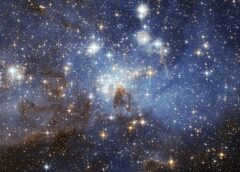

Discover intriguing facts about stars – which are some of the most captivating and remarkable celestial objects. From their shimmering presence in the nocturnal sky to their immense power and energy, it’s no surprise that they have captivated our attention for centuries.
However, were you aware that there are numerous fascinating facts about stars that have likely eluded your knowledge? For instance, were you aware that there are stars so colossal that they could engulf our entire solar system?
Or that there exists a star that has been radiating for more than 13 billion years?
Within this article, we will explore some intriguing facts about stars that you probably had no idea about.
Whether you have a passion for science or simply enjoy gazing up at the night sky, these fascinating tidbits will leave you in awe of the extraordinary power and magnificence possessed by stars. So sit back, unwind, and prepare to expand your knowledge about the vast expanse we call home.
What exactly are stars?
Stars are colossal, luminous orbs of plasma that emit energy through the process of nuclear fusion. They represent the most fundamental entities in the universe, playing a crucial role in the creation and sustenance of life on our planet. With billions of stars scattered throughout the observable Universe, each possessing its own distinct characteristics and properties, the diversity of these celestial bodies is truly remarkable.
Various Kinds of Stars
The universe is home to a wide array of stars, spanning from diminutive, faint red dwarfs to colossal, luminous supergiants. Stars are classified according to their size, temperature, and luminosity. Among the most prevalent types are main-sequence stars, which are in a state of equilibrium and undergo the fusion of hydrogen into helium in their cores.


There are also other variations of stars such as red giants, which occur when stars have used up all their hydrogen fuel and are now converting helium into heavier elements. White dwarfs are remnants of small or medium-sized stars that have depleted their fuel, while neutron stars are incredibly dense remnants of supernova explosions.
Before diving into fascinating trivia about stars, let’s delve into their formation. Stars are born from the collapse of gas and dust clouds due to their gravitational pull. As the cloud collapses, it becomes hotter and starts to rotate, giving rise to a protostar. Once the protostar reaches a specific temperature and pressure, nuclear fusion ignites, marking the birth of a star.
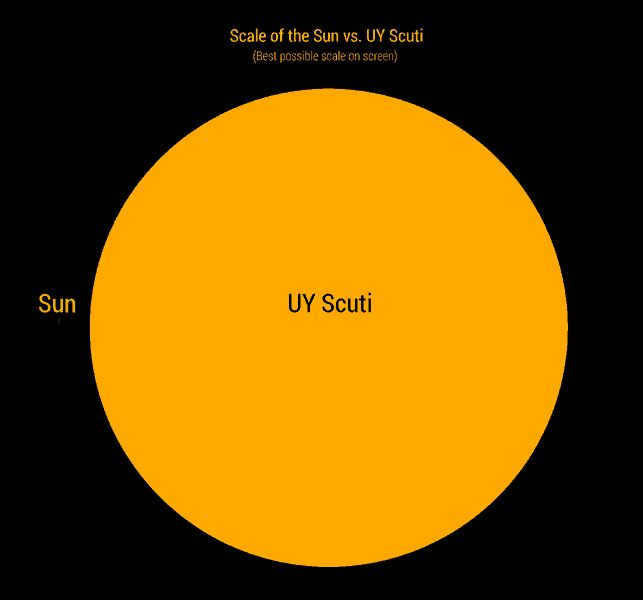

Amazing facts about stars
- UY Scooti is the largest star known to mankind, estimated to be 1,700 times bigger than our Sun.
- There exist stars of such immense size that they could engulf our entire solar system.
- There is a star that has been radiating for over 13 billion years.
- Stars play a crucial role in the creation and maintenance of life on Earth.
- Most of the elements in our bodies were formed within the core of stars.
- The Sun is, in fact, a star and belongs to the category of main sequence stars.
- There are stars that are located at such a vast distance from us, that it takes millions or even billions of years for their light to reach our eyes.
- Astronomy is the field of study that focuses on stars and other celestial objects.
- In ancient times, people used the stars as guides for navigation and as a way to measure time.
- Stars are in a constant state of change and evolution, much like the universe itself.
- Sirius holds the title of being the brightest star that can be seen in the night sky.





